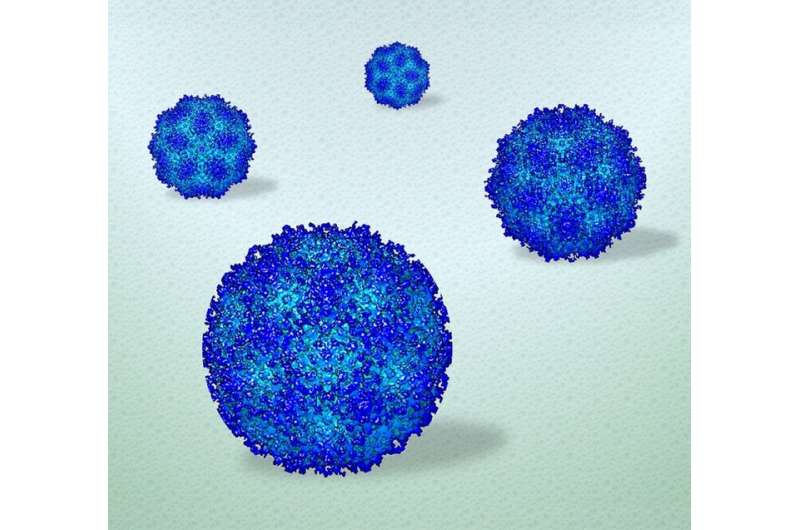A pond in summer can reveal more about a fish than a
pond in winter. The fish living in icy conditions might remain
still enough to study its scales, but to understand how the fish
swims and behaves, it needs to freely move in three dimensions. The
same holds true for analyzing how biological items, such as
viruses, move in the human body, according to a research team led
by Deb Kelly, Huck Chair in Molecular Biophysics and professor of
biomedical engineering at Penn State, who has used advanced
electron microscopy (EM) technology to see how human viruses move
in high resolution in a near-native environment. The visualization
technique could lead to improved understanding of how vaccine
candidates and treatments behave and function as they interact with
target cells, Kelly said.



